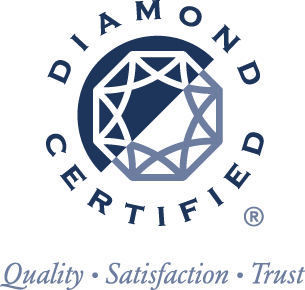Tech Info
Instant Foundations
New construction foundations don’t have to be a headache. The Helical Pier Foundation System gives you the performance of concrete without the drawbacks and liabilities of driven piles and drilled shafts.
The helical pier foundation can be devised to resist or support any load or application. And it’s fast. It can be installed with lightweight construction equipment and loaded immediately. There’s no concrete curing time, and predefined capacities are predictable, putting you in control.
Approved by national building code agencies BOCA, ICBO, SBCCI, CCMC and ICC, the helical pier and tension anchor has become the deep foundation system of choice for architects, builders, contractors, engineers and geotechnical firms.
New Construction and Beyond
The Helical Pier Foundation System is perfect for a wide range of commercial, industrial, institutional and residential applications – from new homes and high-rise structures to sound walls, communication towers and bridges. Here are just a few applications:
- New construction supporting foundation grade beams, column bases, compression, tension and concrete slabs.
- Repairing failed or old foundations using time-tested engineering solutions.
- Retrofit foundations in existing structures where new loads are being added or under existing concrete slab.
- Permanent battered piers to take lateral loads, including wind and seismic.
- Machinery/equipment foundations for immediate loading with increased capacity.
- Wind and seismic loading applications such as sound walls, billboards, communication towers, etc.
- Foundation support in tight access or inaccessible areas, primarily vertical axial compression loading.
- Permanent or temporary foundation structural shoring, primarily vertical compression loading.
- Permanent tension hold downs for wind and seismic loads.
- Foundations in noise-sensitive areas where vibration is a concern.
How it Works
The helical pier is a segmented deep foundation system with helical bearing plates welded to a central shaft. Load is transferred from the shaft to the soil through these bearing plates.
As a result of their true helical shape, the helices do not auger into the soil but rather screw into it with minimal disturbance. The first section, called the Lead Section, contains the helical plates. The Lead Section can consist of one to four helices.
If required, additional helices can be added with the use of Helical Extensions. Plain Extensions are then added until the Lead Section penetrates the bearing strata and the necessary or appropriate torque is achieved.
Solid Advantage
The helical pier foundation is preferred over driven piles, drilled shafts, grouted tendons, auger-cast piles, belled piers and other deep foundation systems for a number of compelling reasons:
- Fast installation and immediate loading.
- Pre-engineered system.
- Eliminates high-mobilization costs associated with driven piles, drilled shafts or auger-cast piles.
- Instant torque-to-capacity feedback for production control.
- Easily modified in the field.
- No need for concrete to cure.
- Uses common construction equipment easily fitted with hydraulically-driven torque motors.
- Easy to use in limited access sites, high water tables and weak surface soils.
- No need to remove spoils.
- No casings required for flowable sands, soft clays or organic soils.
- Minimizes soil disturbance during installation.
- Installs in any weather.
- No vibration.
- Environmentally friendly.
- Hot dipped galvanizing to ASTM A-153.
- ISO 9001 certification.
Anchoring the World
Our helical piers and anchors are used worldwide to secure soil retention projects and deep foundation applications such as residential and commercial buildings, tower foundations and heavy equipment foundations.
Engineered for dependability and long-term stability, helical piers and anchors feature exclusive anchoring techniques, tools, designs and sizes that make other foundation methods a thing of the past.
Approved by all national building code agencies, helical piers and anchors are your first line of defense against poor soil conditions, landslides, floods and time.
Load Testing Services
Load Testing is often a job requirement and the percentage of testing is recommended by the engineers of record. Tension and Compression tests are provided by our team and can be done quickly and safely. Our load testing services offer results that are extremely useful tools for helical pile foundation designers as they confirm the theoretical design of a foundation and allow for site specific correlation between load capacity and installing torque (Wireless Torque Monitoring System).
ASTM D-1143, Standard Test Method for Piles Under Static Axial Compressive Load, latest revision, should be used. This method of load testing is applicable to all types of deep foundations that function to a manner similar to piles regardless of their method of installation. It does not specify a particular method to be used, but rather provides several optional methods.
The load test pile, installation equipment, and installation procedure should be identical to those intended to be used for production piles to the extent practical.
Down. Right. Solid.
Helical piers and anchors go down with power into the ground and are accurate, level and right the first time. The result is solid stability.
Ready to start your project?
Request and Estimate and let's get started

Maloney Construction, Inc.
74 Digital Drive Suite 6
Novato, CA 94949
Business Hours
Monday-Friday: 8:00 AM – 5:00 PM
Sat-Sun: Closed
Maloney Construction | All Rights Reserved
